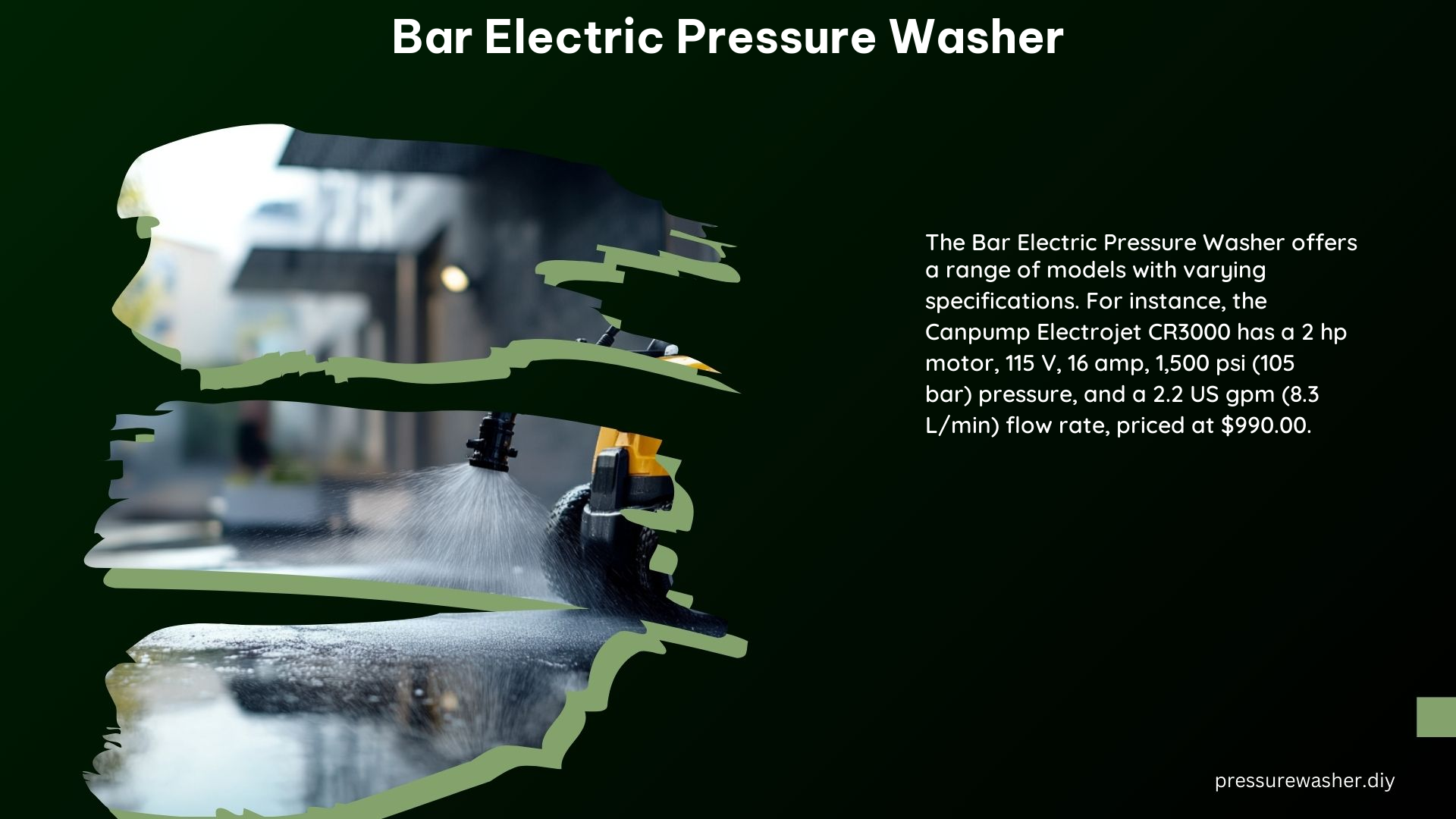Bar electric pressure washers are versatile and efficient cleaning tools designed for a wide range of applications, from residential cleaning to industrial-scale operations. These powerful machines offer a combination of high-pressure water delivery, ease of use, and low maintenance requirements, making them a popular choice among DIY enthusiasts and professional cleaners alike.
Technical Specifications
Ford 120 Bar Electric Pressure Washer
- Pressure: 120 bar (1,740 psi)
- Flow Rate: 6.5 L/min (1.7 GPM)
- Power: 1,800 W
- Voltage: 230 V
- Current: 8 A
150 Bar Electric Pressure Washer
- Pressure: 150 bar (2,175 psi)
- Flow Rate: 7.5 L/min (2 GPM)
- Power: 2,200 W
- Voltage: 230 V
- Current: 10 A
170 Bar Electric Pressure Washer
- Pressure: 170 bar (2,465 psi)
- Flow Rate: 8.3 L/min (2.2 GPM)
- Power: 2,600 W
- Voltage: 230 V
- Current: 12 A
Assembly and Maintenance

Assembly
The assembly process for a bar electric pressure washer typically involves the following steps:
1. Attach the high-pressure hose to the main unit.
2. Connect the wand or spray gun to the high-pressure hose.
3. Install the desired nozzle or spray tip onto the wand or spray gun.
4. Ensure all connections are secure and tightened.
5. Plug the power cord into a suitable electrical outlet.
Detailed assembly instructions are usually provided by the manufacturer, and it’s important to follow them carefully to ensure the safe and proper operation of the pressure washer.
Maintenance
Regular maintenance is essential to keep a bar electric pressure washer in optimal working condition and extend its lifespan. The following maintenance tasks should be performed:
1. Nozzle Cleaning: Regularly check and clean the nozzle to prevent clogging and ensure consistent water flow.
2. Hose Inspection: Inspect the high-pressure hose for any signs of wear, cracks, or damage, and replace it if necessary.
3. Pump Maintenance: Periodically check the pump oil level and change it according to the manufacturer’s recommendations.
4. Filter Cleaning: Clean the water inlet filter to prevent debris from entering the pump and causing damage.
5. Storage: Properly store the pressure washer when not in use, protecting it from the elements and ensuring it’s ready for the next use.
Comparison of Flow Rates
The flow rate of a bar electric pressure washer is an important factor to consider, as it directly impacts the cleaning performance and efficiency of the machine. Generally, a higher flow rate is associated with a more powerful and effective cleaning capability.
When comparing the 150 bar and 170 bar electric pressure washers, the 170 bar model typically has a higher flow rate, ranging from 7.5 L/min (2 GPM) for the 150 bar model to 8.3 L/min (2.2 GPM) for the 170 bar model. This increased flow rate allows the 170 bar pressure washer to deliver more water volume per minute, resulting in a more thorough and efficient cleaning process.
Additional Information
Maximum Pressure
The maximum pressure of a Ford 120 bar electric pressure washer is 120 bar (1,740 psi). This high-pressure water delivery is capable of effectively removing a wide range of dirt, grime, and stubborn stains from various surfaces, making it a versatile cleaning tool.
DIY Tips
When using a bar electric pressure washer, it’s essential to follow the manufacturer’s instructions for assembly, maintenance, and operation. Additionally, it’s recommended to wear protective gear, such as gloves and safety glasses, to ensure your safety during the cleaning process.
